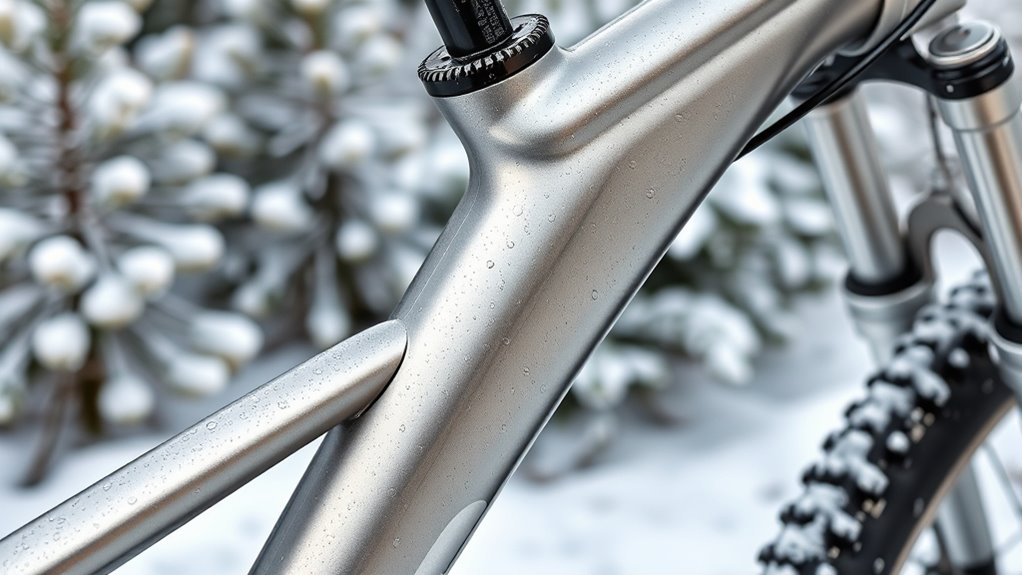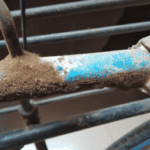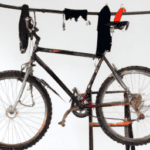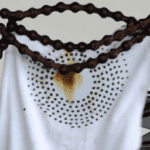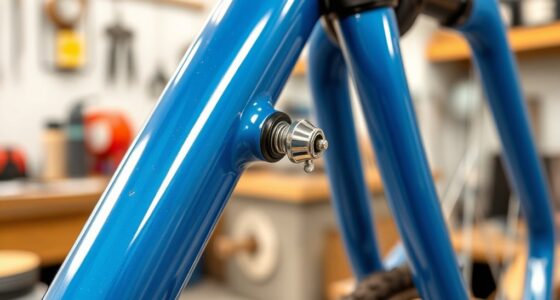To winter-proof your bike with rust blockers, first inspect vulnerable areas like the frame, joints, and metal parts for moisture traps or chips. Clean your bike thoroughly, then choose a reliable rust blocker that offers long-lasting protection and suits cold conditions. Apply it evenly on exposed surfaces, paying attention to joints and moving parts. Regularly check tire pressure and keep your bike dry when not in use. Keep going to learn more tips for keeping your bike rust-free all winter.
Key Takeaways
- Clean and thoroughly dry your bike before applying rust blockers to ensure proper adhesion.
- Focus on joints, metal parts, and areas prone to moisture traps for targeted protection.
- Choose high-quality rust inhibitors with long-lasting and environmentally friendly properties.
- Regularly reapply rust blockers during winter to maintain a protective barrier against moisture.
- Store the bike in a dry, sheltered location and keep tires properly inflated for added protection.
Assessing Your Bike’s Vulnerable Areas
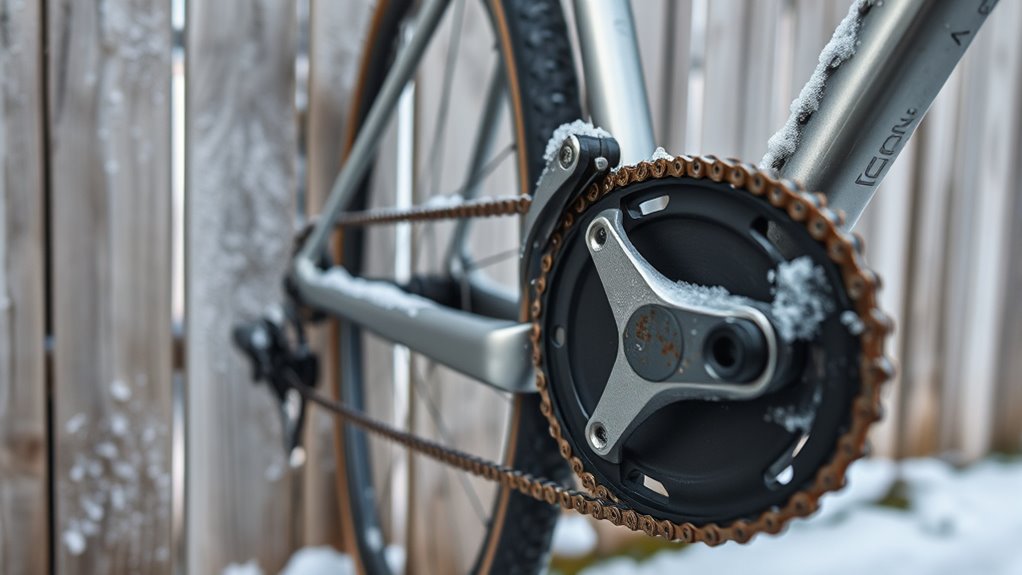
Before winter arrives, it’s essential to identify the parts of your bike most exposed to rust and corrosion. Start by inspecting the frame, paying attention to areas where moisture might settle or paint may chip. Applying proper frame protection helps prevent rust from forming. Next, focus on the chain; it’s constantly exposed to road grime, moisture, and salt, making chain lubrication crucial. Regularly lubricate the chain to create a barrier against rust and ensure smooth operation. Check for any signs of rust or wear on other metal parts like spokes, bolts, and derailleurs. Addressing these vulnerable areas now allows you to maintain your bike’s integrity throughout winter. Being proactive in evaluating and protecting these key spots keeps your bike in top shape when spring arrives. Additionally, understanding corrosion resistance can help you choose appropriate protective products for long-term durability. Incorporating rust blockers designed for bicycles can further enhance protection by forming a protective barrier against moisture and salt. Using products with anti-corrosion properties can provide extra assurance that your bike remains rust-free during harsh winter conditions. To further extend your bike’s lifespan, consider applying tuning techniques such as proper lubrication and protective coatings that are specifically designed for winter weather.
Cleaning and Preparing Your Bike for Treatment

To guarantee your rust blocker treatments adhere effectively, start by thoroughly cleaning your bike. Remove dirt, grease, and debris, paying close attention to hard-to-reach areas. After cleaning, inspect your bike’s tire pressure and inflate tires to the recommended PSI to prevent flats and assure smooth storage. Proper bike storage is vital; choose a dry, sheltered spot to reduce moisture exposure. Additionally, understanding AI in Education can help in developing smarter maintenance tools or virtual coaching for bike care. A clean surface with proper color accuracy ensures the rust inhibitors can form a better bond, enhancing their protective qualities. Incorporating automated data analysis can also assist in tracking your bike’s maintenance history for optimal care.
Selecting the Right Rust Blocker Products
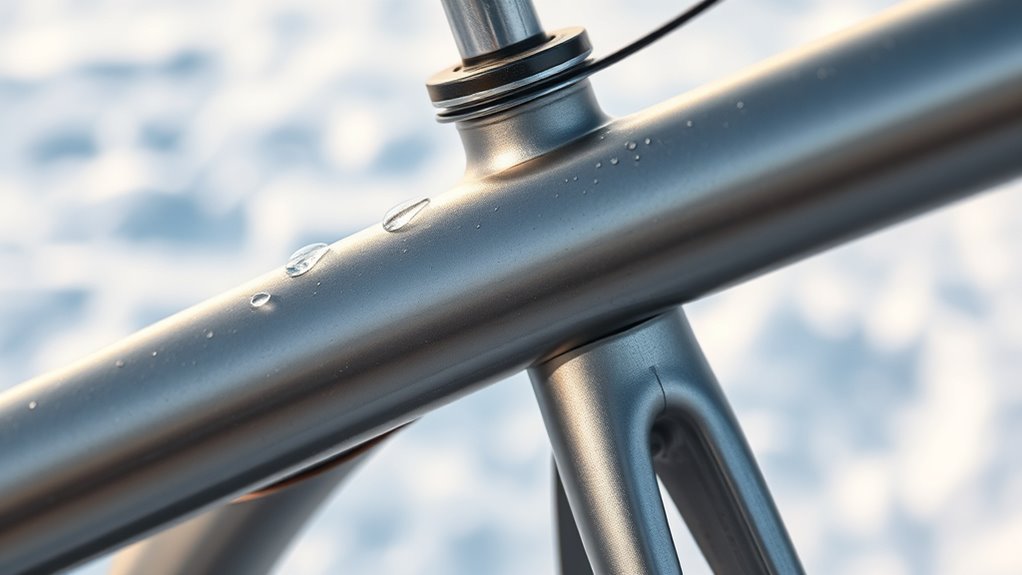
Choosing the right rust blocker products is essential to effectively protect your bike during winter. You want a product that offers reliable corrosion prevention, especially in harsh conditions. When comparing options, look for features like long-lasting protection, ease of application, and compatibility with different bike surfaces. Some rust blockers form a thick, protective coating, while others penetrate and neutralize existing rust. Conduct a product comparison to identify which suits your needs best, considering factors like durability and environmental impact. Reading reviews and checking the manufacturer’s specifications can help verify the product is suitable for cycling gear. Additionally, understanding how Mazda Tuning techniques improve vehicle performance can guide you in selecting rust blockers that are compatible with various bike materials. Proper application techniques are crucial to ensure maximum effectiveness and protection. Using products with advanced corrosion inhibitors can further enhance your bike’s defense against winter elements. Incorporating mindfulness techniques into your maintenance routine can help you stay attentive to your bike’s needs throughout the season. Selecting an effective rust blocker now can save you time and money later, keeping your bike in top shape through the winter months.
Applying Rust Blockers Effectively

Applying rust blockers correctly is key to guaranteeing your bike stays protected throughout winter. Start by cleaning your bike thoroughly to remove dirt and existing rust. Once dry, inspect your chain and apply a suitable chain lubricant, ensuring it’s well-lubricated to prevent moisture buildup. Use a cloth or spray to evenly distribute the rust blocker on exposed metal surfaces, paying close attention to joints and hard-to-reach areas. Check your tire pressure and inflate your tires to the recommended PSI, as proper pressure reduces stress on the rims and prevents moisture ingress. Avoid over-application, which can attract dirt. Proper application techniques can enhance rust prevention and extend your bike’s lifespan. Regular maintenance and correct application methods can significantly improve the effectiveness of rust blockers. Consistent, careful application ensures rust blockers form an effective barrier, keeping your bike corrosion-free and ready for winter conditions. Recognizing potential trust issues can help you address underlying problems and maintain your bike’s integrity over time. Additionally, understanding the latest advancements in rust-proofing can help you choose the most effective products for your needs.
Maintaining Your Bike During Winter Months
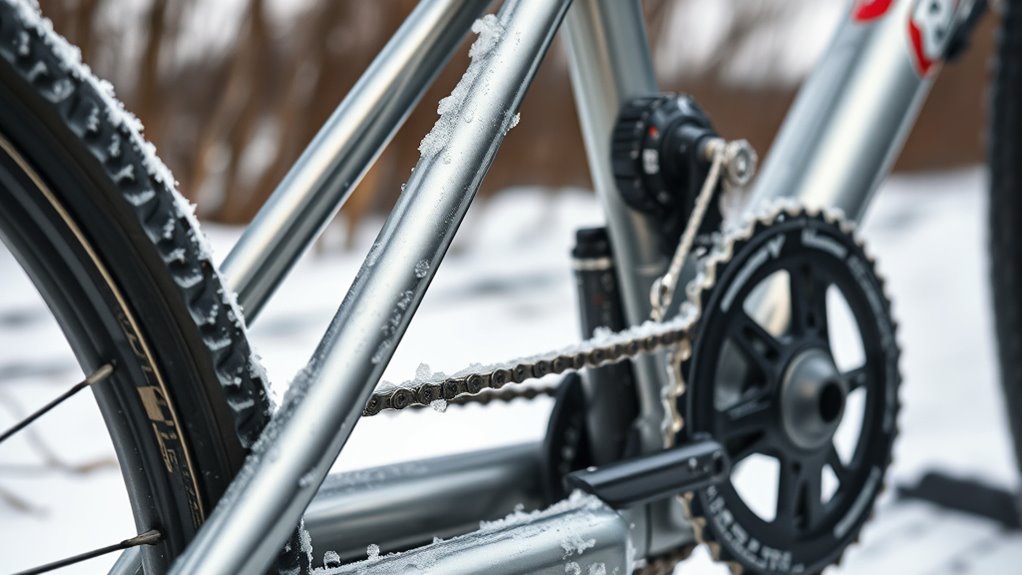
Once you’ve applied rust blockers and taken steps to protect your bike’s vulnerable spots, maintaining it during winter months becomes essential to guarantee longevity and performance. Regularly check your tire pressure, as cold temperatures cause air to contract, leading to under-inflation. Proper tire pressure improves traction and reduces the risk of flats. Additionally, keep your chain well-lubricated with a winter-specific lubricant to prevent rust and ensure smooth shifting. Wipe off any excess lubricant to avoid dirt buildup. Frequently inspecting your bike for rust spots or corrosion helps catch issues early. Storing your bike in a dry, sheltered area when not riding can prevent moisture buildup that accelerates rusting. Using appliance maintenance plans can further enhance your bike’s resistance to winter elements by ensuring all components are properly maintained. Incorporating essential oils for rust prevention into your maintenance routine may provide additional protective benefits. For added protection, consider applying a rust-proof coating to vulnerable metal parts. These simple maintenance routines will keep your bike running smoothly and extend its lifespan throughout the harsh winter months.
Conclusion
Now that you’ve got your bike winter-proofed with rust blockers, you’re all set to brave the harshest seasons. Think of it like armor for your trusty steed, just like knights of yore. Regular maintenance and timely reapplications will keep rust at bay and your bike running smoothly. So, don’t wait for a plague of rust to strike—be proactive, and your bike will thank you for many more rides to come. Stay vigilant, and ride on!
